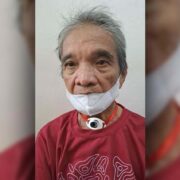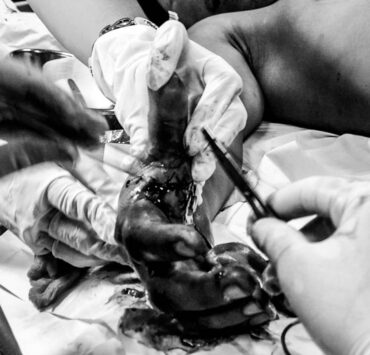Walking Utah’s arches and finding Butch Cassidy
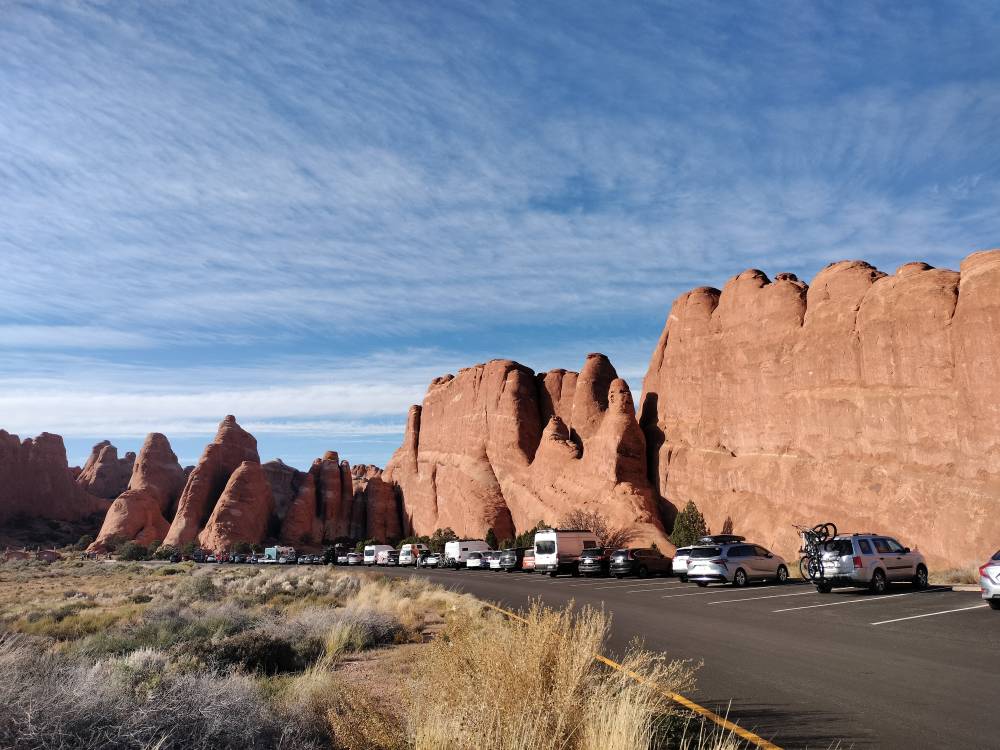
Camping aficionados Charro Jambalos and Michael Levin planned a trip so I, a noncamper, could experience roughing it in America’s wilderness during my visit. I took up the gauntlet, stoked to take in nature’s wonders and blissfully unaware of the challenges to my urban sensitivities, the least of them being unable to shower for days.
Our trip began at Great Basin National Park in Nevada and continued to two national parks in Utah, Bryce Canyon National Park in Bryce and Arches National Park in Moab.
To cut 50 minutes from the three-hour drive time to Arches from Nevada, Charro backtracked to the west to reach the east, traveling the 13-mile rural landscape on Highway west 12. After a right turn to Highway 89 toward the town of Panguitch, Nevada’s vermilion, orange, and tangerine hues turned grayish black. Dark clouds were keeping pace with us.
Images of cowboys herding cattle in the wintry weather flashed through my mind as Charro’s GMC Terrain hurtled toward Utah.
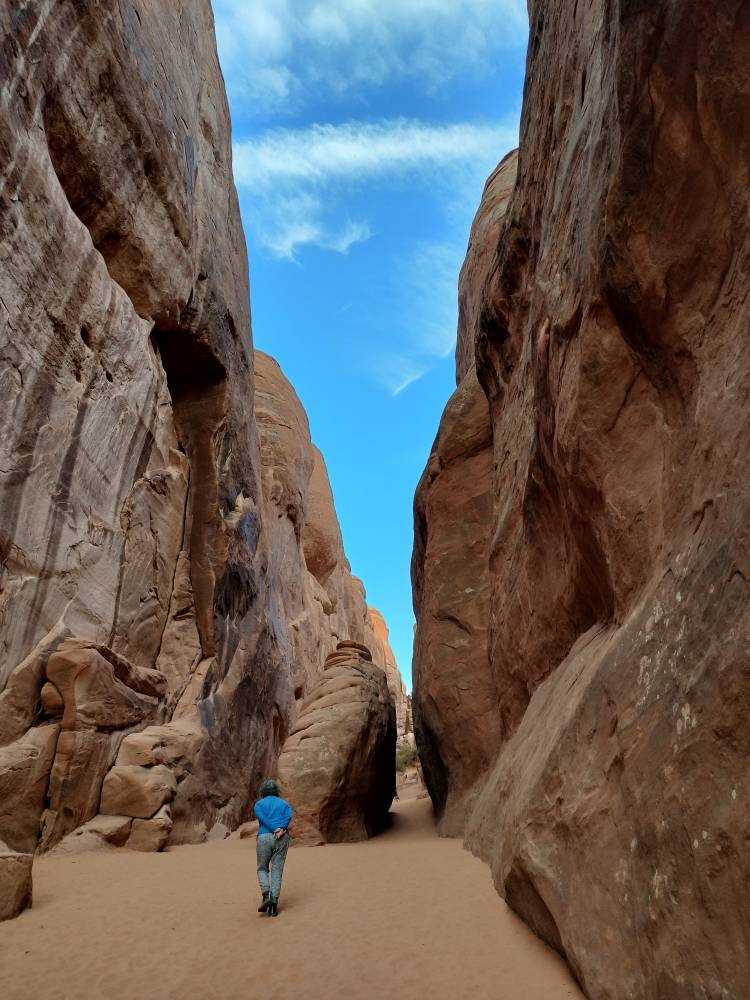
Packing up our camping gear for Arches was supposed to be leisurely because rain wasn’t forecast until the afternoon. Yet there was no mistaking the threat of a downpour. The loud rumbling from a distance drew near as I extricated myself from the sleeping bag. At 7 a.m., rain struck the tents in staccato rhythm. We rushed to fold the tents and sleeping bags. Within minutes—our fingers icy stiff—the gear was stowed in the trunk alongside the food, portable stove, gas canisters, and water containers we’d packed the night before.
Comparatively, Arches was warmer than Great Basin and Bryce Canyon, despite the glacial yet sunny mornings and the Siberian evenings with single-digit temperatures. The thought of bathing became a scary idea.
To stay warm in all the national parks, I followed Charro’s lead on layering: leggings under thick sweatpants, sports jacket over a pullover, and a heavy hooded jacket over everything. The arctic ensemble was completed with a beanie (I wore two, one over the other), thick socks, and gloves. Thus dressed, I still wondered how cowboys withstood the bitter cold.
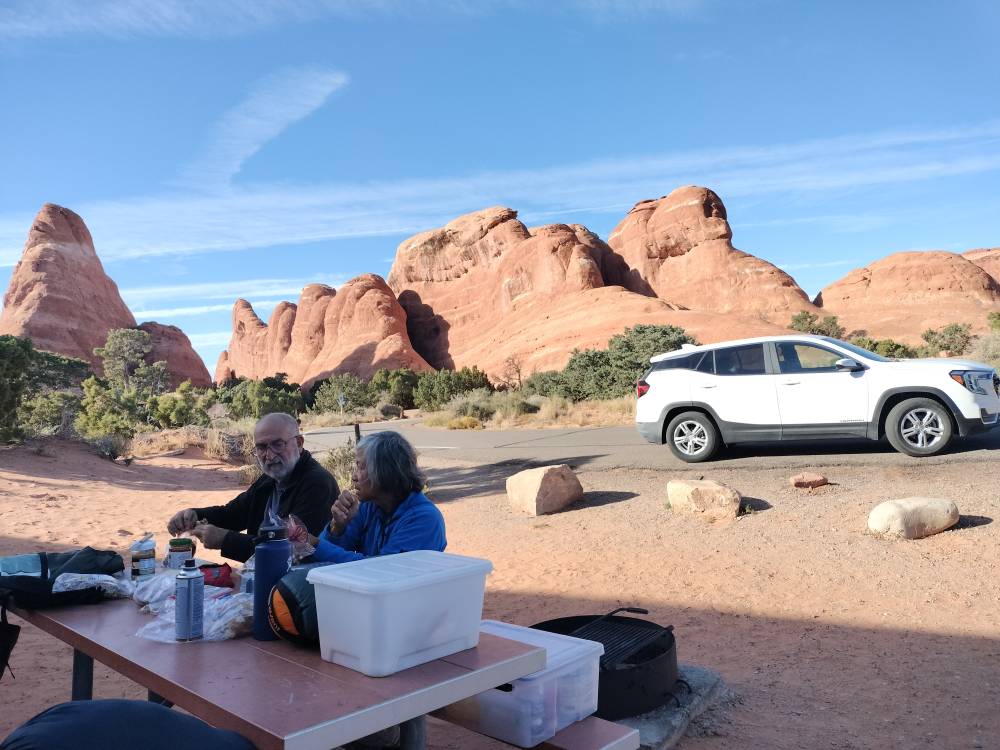
Having a campfire was another way to keep warm. We bought firewood (campground rules prohibited wood gathering) for the campfires at Great Basin and Bryce Canyon except at Arches, where the night’s fierce wind and sandstorm upended all plans, from dinner to sleeping arrangements. Sand permeated my and Charro’s tent, as well as Michael’s. In the end, I slept in the Terrain that swayed as the wind blew all night, while Charro and Michael stayed in the smaller tent.
Hiking was the third way to banish the cold. Thoughts of the cold, hunger, and hygiene are stamped out when your legs feel like lead. You just want to get back to base camp to cocoon in your sleeping bag.
Sculpted rocks
Utah isn’t totally unfamiliar. It’s the home of Donny and Marie Osmond, Mormonism, and plural marriages. Up until the camping trip, I was oblivious to Arches’ sculpted rocks, or arches, which are monumental testaments to slow-moving geological changes. Visitors must be game to go camping—not glamping—because Arches only has its 52 campsites and the salmon-color rock sculptures, unlike Bryce Canyon, which is a developed campground with showers, a general store, laundry service, and a lodge.
The 8-mile drive from Arches’ entrance to the Devils Garden campground is like a Rorschach test. We called out what the “rock blots” resembled: mango, suman (a Filipino rice cake), aliens with trapezoidal heads, Snoopy on top of his doghouse, fist, ship, and butter on a stack of pancakes.
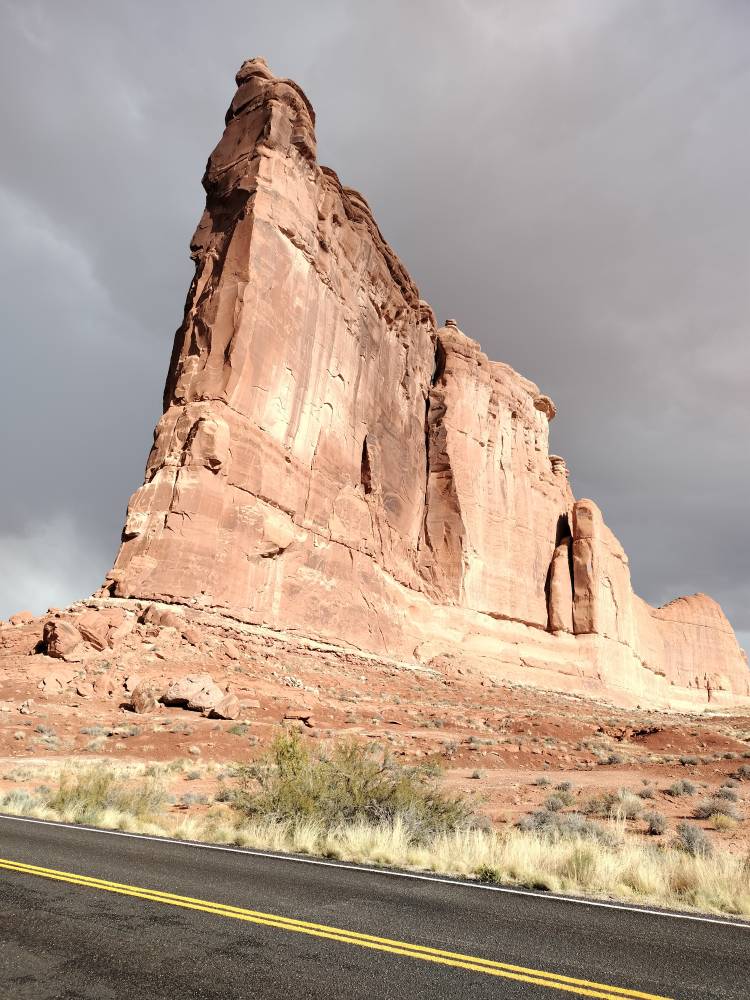
Per brochure and sign, movements below and above ground forged Arches’ rock sceneries. The family park sat on an unstable salt bed deposited across the Colorado Plateau a million years ago before the sea dried up. The residue from the floods, wind, and ocean blanketed the salt bed, compressing it into a mile-thick layer of sandstone.
The salt beds became more unstable with the deep faults in the ground. The movements (shifting, crumpling, liquefying) pushed the sandstone upward into “domes” and other sections fell into cavities. The rock pattern was further altered when water seeped into the cracks and turned to ice, which broke the sandstone into pieces and gave way to fins.
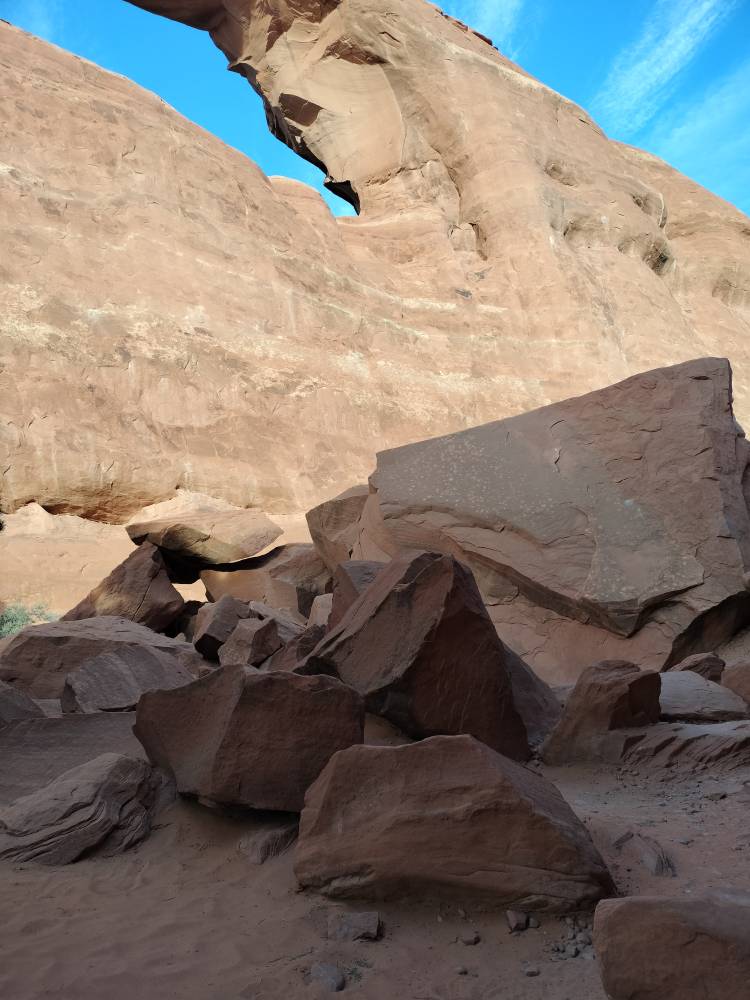
Above ground, wind and water erosion “chipped” at the fins, turning them into arches. With the continuous weathering and erosion, some arches totally collapsed while others remained, with missing portions.
Hiking Arches
Pitching the two tents at campsite 49 could only be done after hiking. The wind was particularly gusty the afternoon we arrived, and the tents wouldn’t stop flapping when we set them on the sandy ground.
We first hiked at Devils Garden. The soaring rocks and arches would make even grouches gawk at the universe’s sculptures, but they wouldn’t take kindly to its joke. I was walking slower and panting before realizing that the flat terrain was deceptively inclined until the trail’s end. But I persevered and reached a side path connecting Devils Gardens to Pine Tree, an arch named after the trees around and under it.
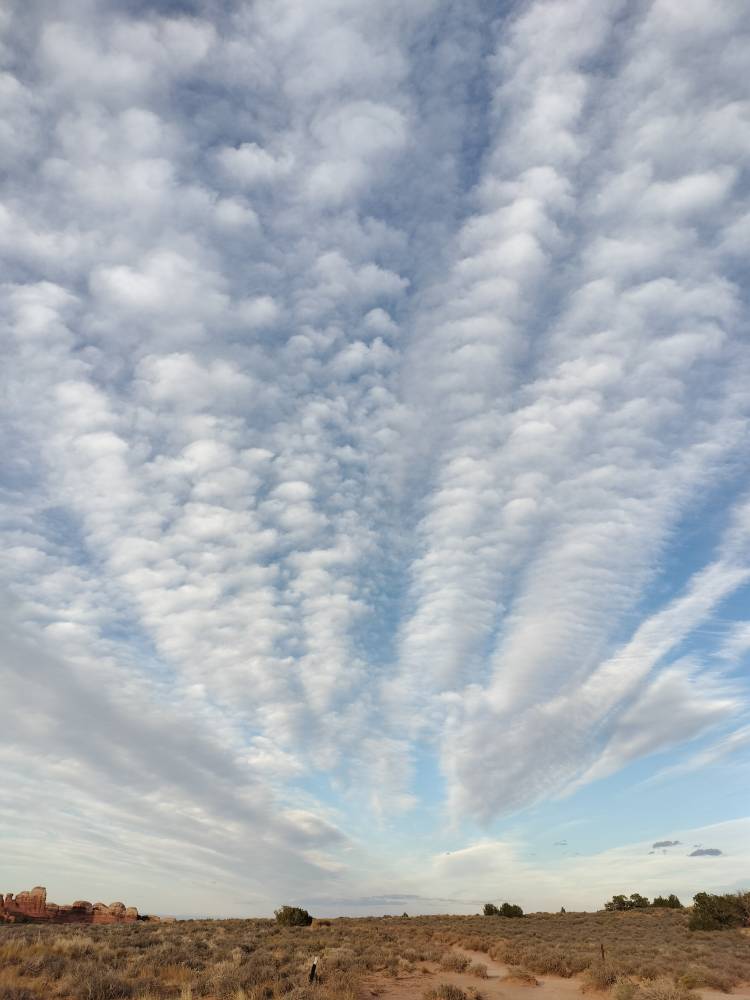
Next, we drove to the entrances to the Sand Dune and Skyline Arch trails. Walking on sand is arduous, but seeing Sand Dune’s arch and tall sandstone walls was enough impetus to tread the soft path. I saw people surrounding a guide pouring water on the sand. Walking closer, I heard him explaining how the rock patterns formed.
Skyline Arch (aka “hole in the sky”) was the last trail for the day. The opening was smaller. It’s said that a boulder sat inside the arch until it suddenly fell to the ground in 1940, doubling its opening size to 71 feet. The broken boulder still lies below the arch to be scrambled over or, sadly, defaced. However, graffiti aren’t tolerated anywhere in the park because they leave scars on the rocks and are hard to remove.
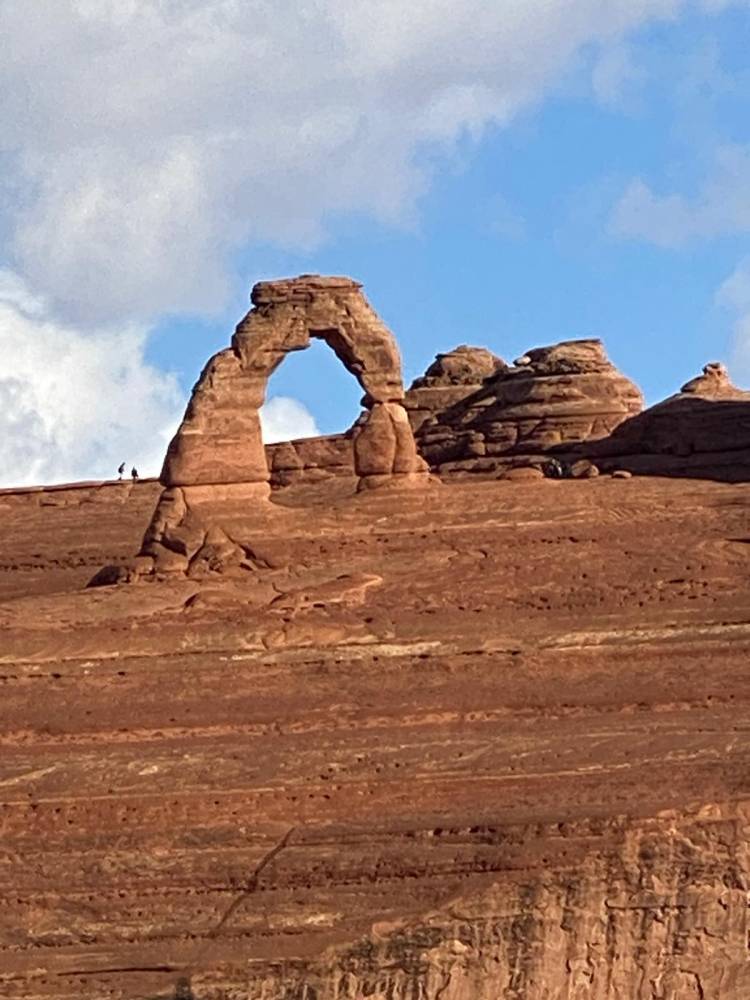
The following morning, before heading back to California, we wended our way up the Delicate Arch viewpoint trail. It’s the shortest way to see the arch at the other side of the canyon, but difficult with the uphill walk and tricky going back down with the unmarked pathway.
Charming Cassidy
Another Utah discovery was the home of outlaw Butch Cassidy (born Robert Leroy Parker) from 1880 to 1884, before he started robbing trains and banks. Cassidy and his buddy, the Sundance Kid, have long been buzzwords because of the 1969 eponymous Hollywood film which starred the heartthrobs Paul Newman as Cassidy and Robert Redford as Sundance.
We stopped at the Cassidy house in Circleville en route to Moab. The bungalow was preserved by the late Fred Hayes, director of the Utah Division of Parks and Recreation from 2012 to 2018. Cassidy was 14 when he and his family moved from Beaver to Circleville; he moved out four years later. Ingress into the wooden house was cordoned off by a thick plastic wall panel. Peering through the window, I was startled to see a life-size cut-out figure of Cassidy in the room.
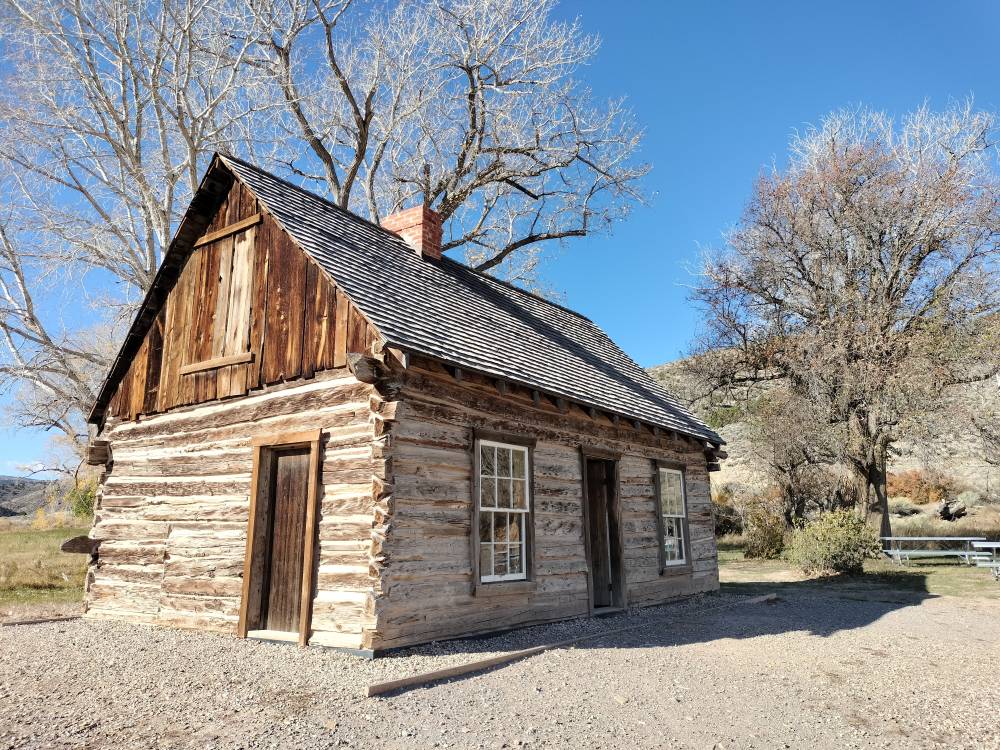
Descriptions of Cassidy in the property are conflicting. One historical sign contrasted with the definition of outlaw: “He was a fun big brother, loved dancing and racing horses, liked to read, was a hard worker, and kind to animals.”
Another sign aligned the Mormon desperado with his cold-blooded predecessor, Jesse James. Quoting The Salt Lake Tribune (1901), it said: “Butch Cassiday (sic) has more lives than a dozen cats … He’s taken part in every notorious robbery … He’s not a mere man, he’s a criminal syndicate.”
The third sign announced a $2,000 reward to anyone with information on Cassidy and the Wild Bunch (as locals and the media branded them). The reward was being offered by the Pinkerton National Detective Agency, which was founded by Scottish immigrant Allan Pinkerton in 1850. (The American writer Dashiell Hammett incorporated his experiences as a Pinkerton detective in his stories.) The Wild Bunch robbed The First National Bank of Winnemucca, Nevada, of $31,000 worth of gold coins.
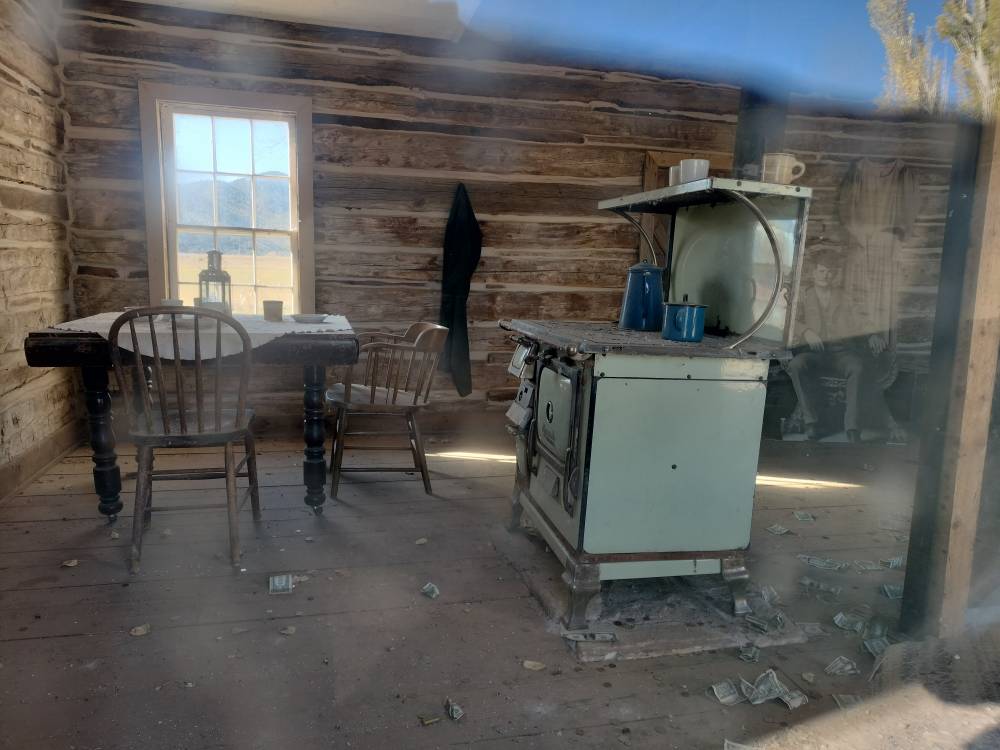
Who was Cassidy, really? Charles Leerhsen explained the dichotomous persona of the robber with British ancestry (his grandparents were from Liverpool, England) in “Butch Cassidy: The True Story of an American Outlaw,” his book I picked up post camping from a library in Palo Alto, California.
Standing at roughly 5’9,” square-jawed Cassidy was “good-looking yet not so beautiful as to incite ridicule and jealousy,” wrote Leerhsen. Before becoming an outlaw, he went to Friday night dances, played poker and the harmonica, shot at targets, and chatted up the ladies. He dressed stylishly, loving Tiffany watches, patent leather shoes, and derby hats. He was a skilled cowboy (even lassoed a mountain lion) and never stole livestock from the ranchers he worked for. His old boss found him pleasant, cultured, and charming.
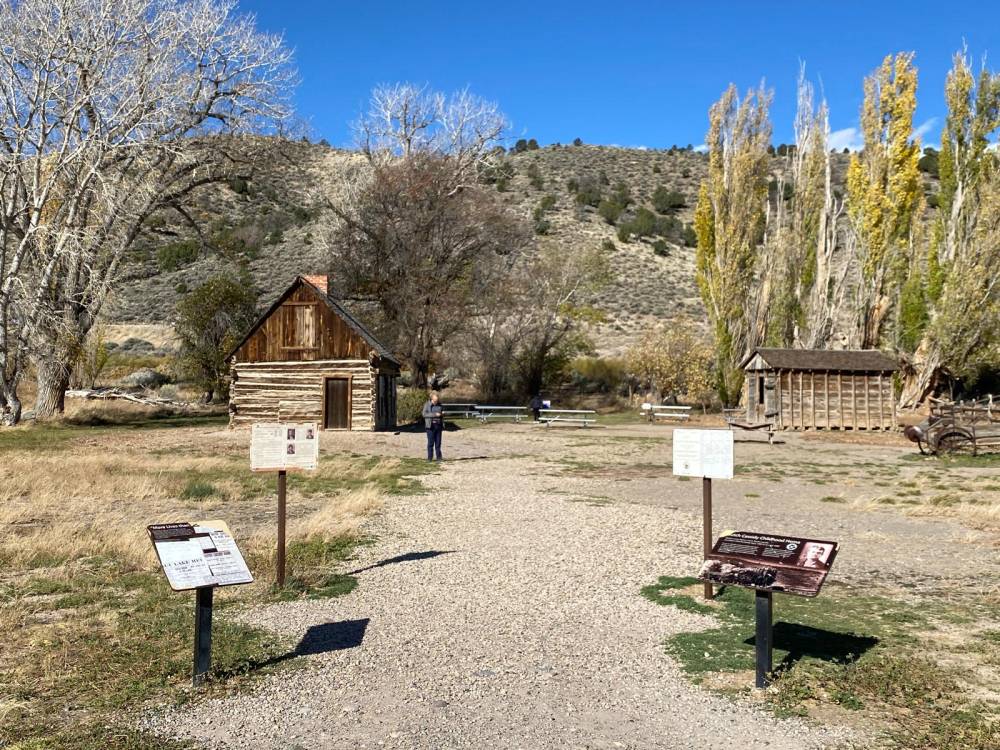
But Cassidy was battling the crushing monotony of daily existence in the intermountain west, said Leerhsen. He reinvented himself from Robert Leroy Parker to George Cassidy, taking the name from Mike Cassidy, an “attractive, blond, blue-eyed cocky gunslinger” who, per past whispers, was his lover. Later, he took on the popular nickname Butch, which implied tough guy and sometimes butcher, after working as a butcher in a coal mining station in Rock Springs, Wyoming.
Interestingly, his sexuality didn’t damage him because “sexual contact between men in the 19th century didn’t mark them as homosexuals,” said Leerhsen, quoting historian Richard White.
Unlike Jesse James, Cassidy wasn’t a killer despite growing up in Utah’s “landscape of hatred, violence, fear, and stupidity.” He was a man on the lam and yet always observed a strict moral code, wrote Leerhsen.
‘Relics of barbarism’
Utah was already at war when Cassidy was born on April 13, 1866. Taking issue with Mormon polygamy and Southern slavery—“the twin relics of barbarism,” according to Leerhsen—President James Buchanan sent 2,500 soldiers to enforce monogamy laws in 1857. The supposed battle between the Mormon militia and nonbelievers lasted for year, with the Mormons stealing rations and mocking Buchanan’s administration, wrote Leerhsen.
The Mormon militia then started a new war to avenge the attack on their religion. They goaded the Ute people to attack a wagon train on its way to California from Arkansas. The native Indian tribe is known for appearing “six inches outside the windows of white people’s cabins, painted for battle, and staring fiercely,” detailed Leerhsen.
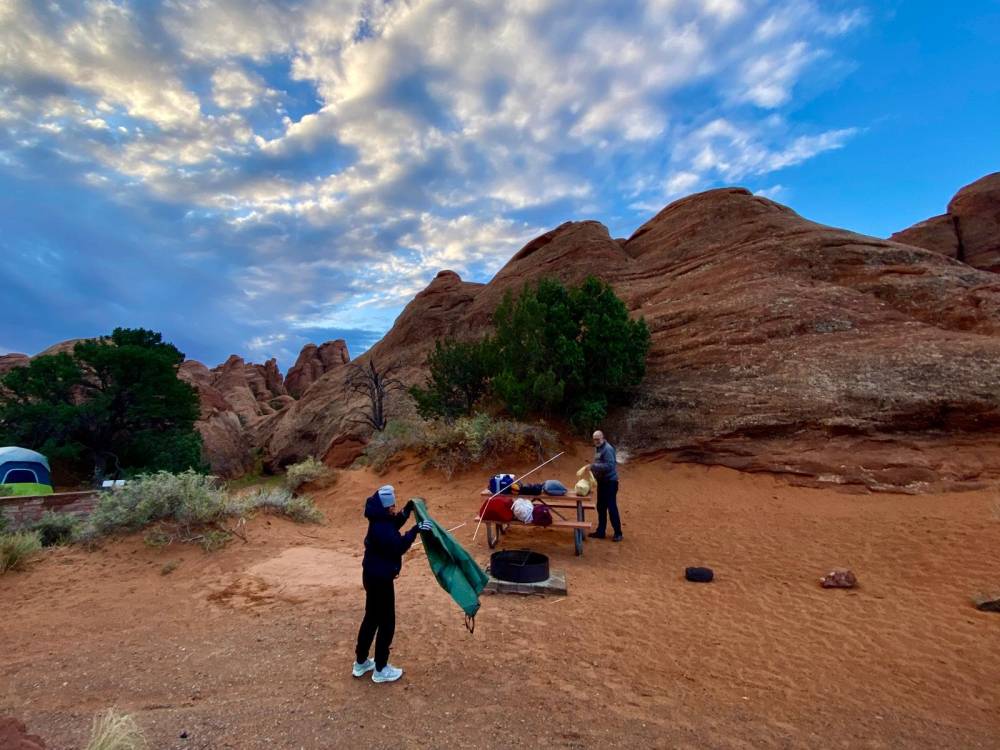
But the Ute refused, and the Mormons themselves killed the 120 men, women, and children in the wagon train at Mountain Meadows. After that slaughter came the Circleville massacre of the Paiute, the Ute’s affable counterpart, where, per Leerhsen’s account, the Mormons killed the men, women, and children they rounded up, but spared a few infants.
The death of 20 members of the Paiute tribe summed up the white man’s prejudiced view of native Indians, Leerhsen wrote. The Mormons liked to say, “The only good [Indian] was a dead one especially an angry one,” he said. Not that the Paiute men were incredibly naive, he said: They knew the white men saw all Indians as trouble, but they were being true to their amiable nature, and didn’t suspect the death trap.
Important lessons
Camping at Arches was exacting. It wasn’t romantic sleeping outdoors in the pitch-black night with a gusty wind and a sandstorm, or using toilets not of the flushing type. Yet there were important lessons. I adapted to the toilet situation, grateful that I didn’t need to bring a shovel.
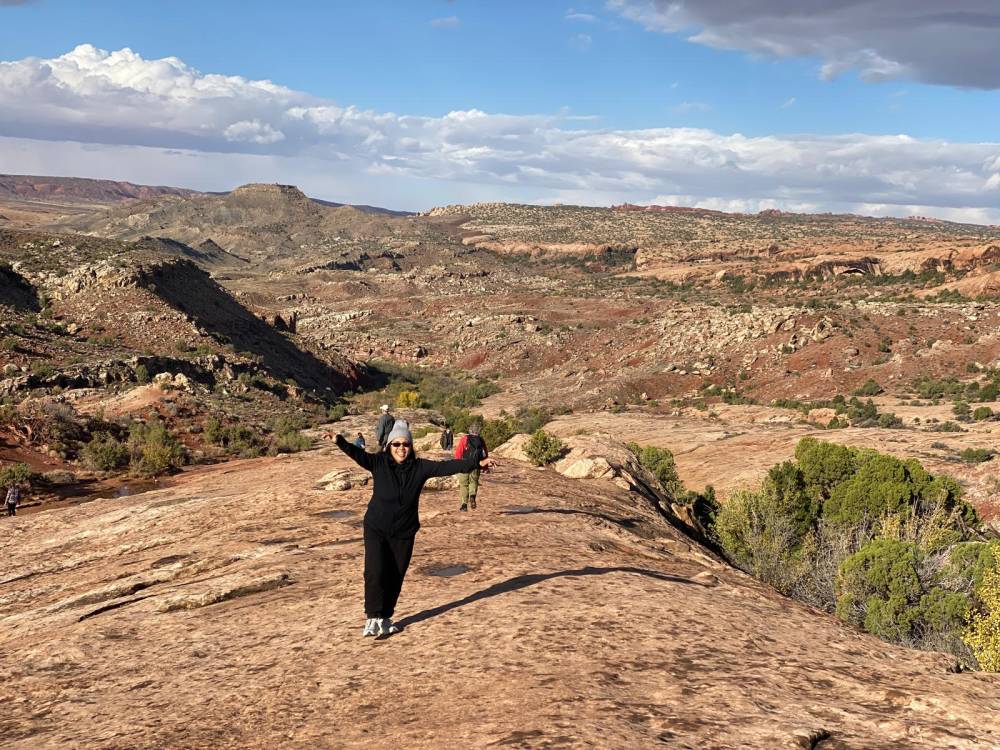
I understood why the cold temperature was the least of the cowboys’ worries. They faced poverty, injustice, and social inequalities. Cassidy, who worked for wages, was tagged as a failure. Quoting Abraham Lincoln, Leerhsen said it indicated “either a dependent nature which prefers it or improvidence, folly, or singular misfortune.” Then there’s that provoking thought Leerhsen raised: that the press imposed “upon a gullible public a gang that only vaguely resembled the real group that surrounded Butch.”
While camping, I read the books I had brought with me without distraction. I enjoyed the bracing mountain air and the quiet of the hikes. I appreciated nature and the different experiences. Michael summed it up when he loudly mused, “I like [Bryce Canyon’s] hoodoos, but I like the arches, too. They’re different. You walk among the hoodoos but you walk around the arches.”
Nonetheless, I was eager to return to my life with cafés and flushing toilets. To ease back into it, we stopped at Arturo Aboitiz’s Mas Café in Moab. Watching Arturo working as the barista and his sister Melissa as the baker was touching.
I finished off my chocolate croissant and thought about Cassidy and his younger sister Lula. Was Cassidy charming to his family as he was with strangers in wintry, conservative Utah?












